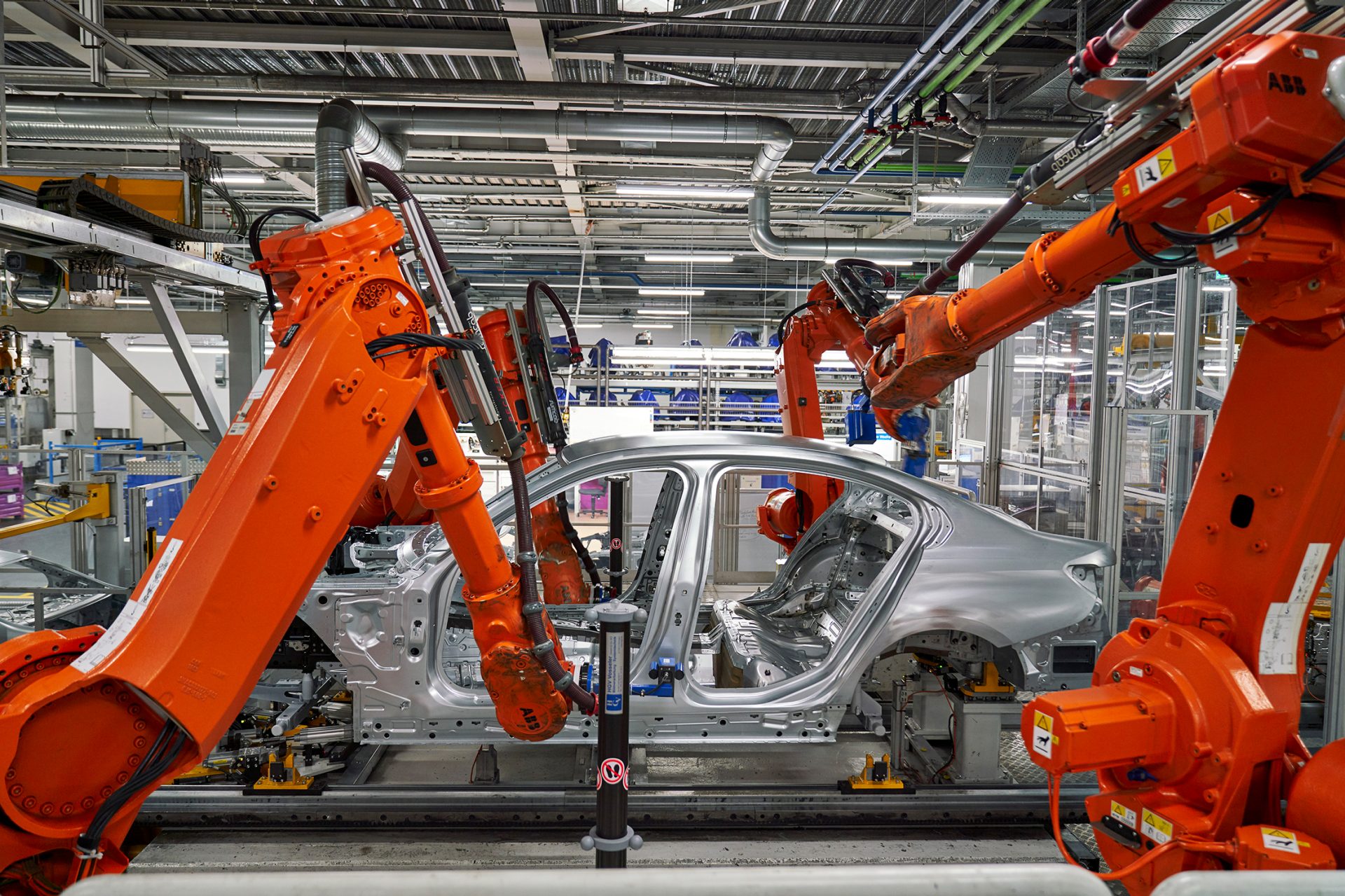A QUANTUM LEAP FOR MOBILITY?
Digitalisation is one of the driving factors behind the transformation of individual mobility. The BMW Group is pressing ahead with systematic digitalisation across all areas of the company, continuously improving processes throughout the value chain.
Achieving the best results possible depends on having the right tools – and this includes highly-advanced computers. Both scientific organisations and corporations are now developing a new, considerably more powerful tool – the quantum computer.
We talked to Oliver Wick (on the right), a technology scout for the BMW Group’s Research division, and Bernhard Pflugfelder (on the left), a specialist in artificial intelligence and machine learning, about what lies behind “quantum computing”. Even today the BMW Group is already putting this new technology to work in order to drive progress within the mobility industry in the medium and long term.

Mr. Wick, Mr. Pflugfelder: How would you describe a quantum computer in layman’s terms?
Wick: Classic computers – from laptops to smartphones – process information in a binary system that uses so-called bits – from ‘binary digits’
– with a value expressed either as 0 or 1.
In quantum computers, the smallest unit of information is called a qubit – short for ‘quantum bit’. These qubits can be much more than just 0 or 1. In quantum computing, quantum-mechanical phenomena, with names like ‘tunnelling’, ‘quantum entanglement’ and ‘quantum interference’, are used to speed up certain computing operations. This means a qubit can be put in a state that can also take on values between 0 and 1 – theoretically, an infinite number at the same time. This is referred to as a superposition state.
Pflugfelder: With quantum entanglement, it is theoretically possible to map a previously unthinkable amount of data and process it at high speed. In our research, for example, we considered a problem where there were theoretically 10107 possible solutions: calculating the optimal route for a robot that seals weld-seams on cars. This exercise would take current state-of-the-art computers several years. Quantum computers, on the other hand, can calculate all the possibilities within just a few seconds.
That sounds very promising. Is it already possible today?
Pflugfelder: These are highly complex machines and development is still in the early stages. We also have to translate use cases with a completely new kind of algorithm development so that they can be solved in a quantum system.
Wick: If we think back 80 years or so, the first computers initially relied on room-filling hardware with horrendous energy consumption. Many experts were sceptical about the new technology at the time. These systems have undergone tremendous development since then and modern computers have found their way into almost all areas of life, becoming indispensable in the process. A modern smartphone has more computing power than NASA had access to for the lunar landing programme at that time.
So, the quantum computer’s hour of glory is still some way off?
Pflugfelder: Definitely. And quantum computers aren’t necessarily right for every kind of task. They currently tend to be used for problems where our classic systems come up against an insurmountable barrier. In materials research, for example, quantum computers can simulate the behaviour of material combinations at an unprecedented level, e.g. for development of new kinds of batteries.
Another field of application for existing quantum systems is tasks involving optimisation – for example, with our painting robots. The aim is to find the optimal configuration of certain systems. Production lines and traffic control systems could be additional application areas.
A really fast-growing field of research is so-called quantum machine learning, where quantum computers are used to accelerate certain classic machine-learning processes. These new kinds of learning processes for artificial intelligence could be particularly useful in autonomous driving.

How did You approach this complex topic?
Wick: We have been studying quantum computing very closely since 2017. We looked at the potential impact of quantum computing on our processes, products and services and identified possible use cases. We explored three of them in a feasibility study on early quantum computers conducted by the BMW Startup Garage, together with the startup QC Ware.
The aim of these studies wasn’t to derive a direct economic benefit from the findings, but to gain a better idea of the performance capabilities of current quantum computing technology and build up in-house expertise for future projects.
Pflugfelder: Another important aim of the feasibility study was to create awareness of the new technology in different areas of the company and establish a cross-divisional quantum computing community. As a result, we are now able to identify new use cases in different areas of the BMW Group more quickly and implement them in interdisciplinary working groups.
So, what comes next?
Pflugfelder: Hardware and software development is a tremendously dynamic field. To keep up with the latest developments, it is important to build a strong network with other companies and, particularly, research institutes.
We are currently compiling an extensive portfolio of use cases and prioritising them according to feasibility and possible impact on company processes. The most relevant cases will then be implemented by the end of the year.
Wick: Our approach involves using “quantum computing as a service”: That means we don’t need our own quantum computers. Instead, we will be working with partners who have access to quantum computers and concentrating on applications for the technology.
What do You predict: When will we see quantum computers used in real-life situations?
Pflugfelder: According to the experts, we can expect to have some initial success with relevant impact on processes and developments in the automotive industry within about five to ten years. We will probably see this first of all in areas such as optimisation of production lines, for example, as well as material simulation.





